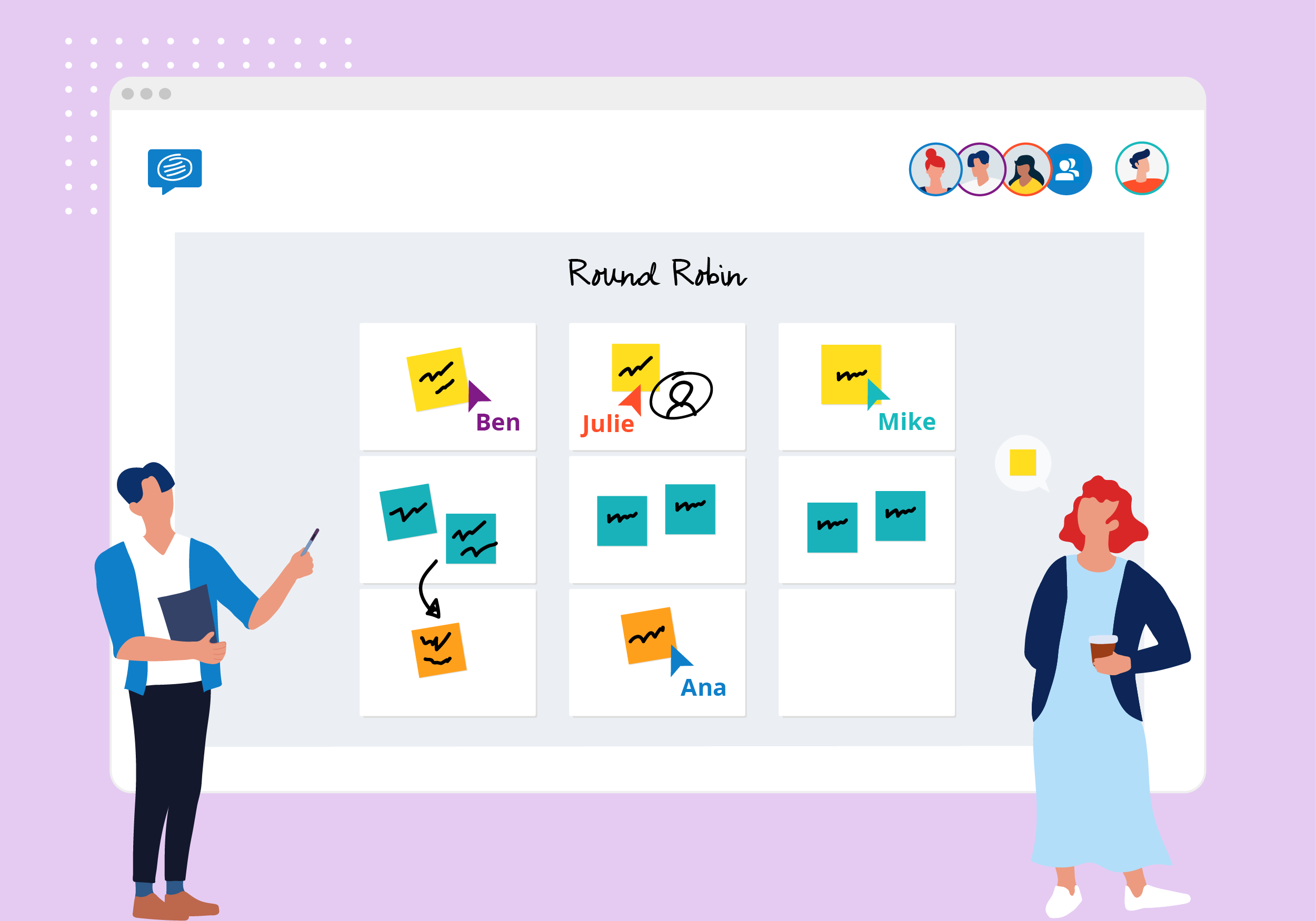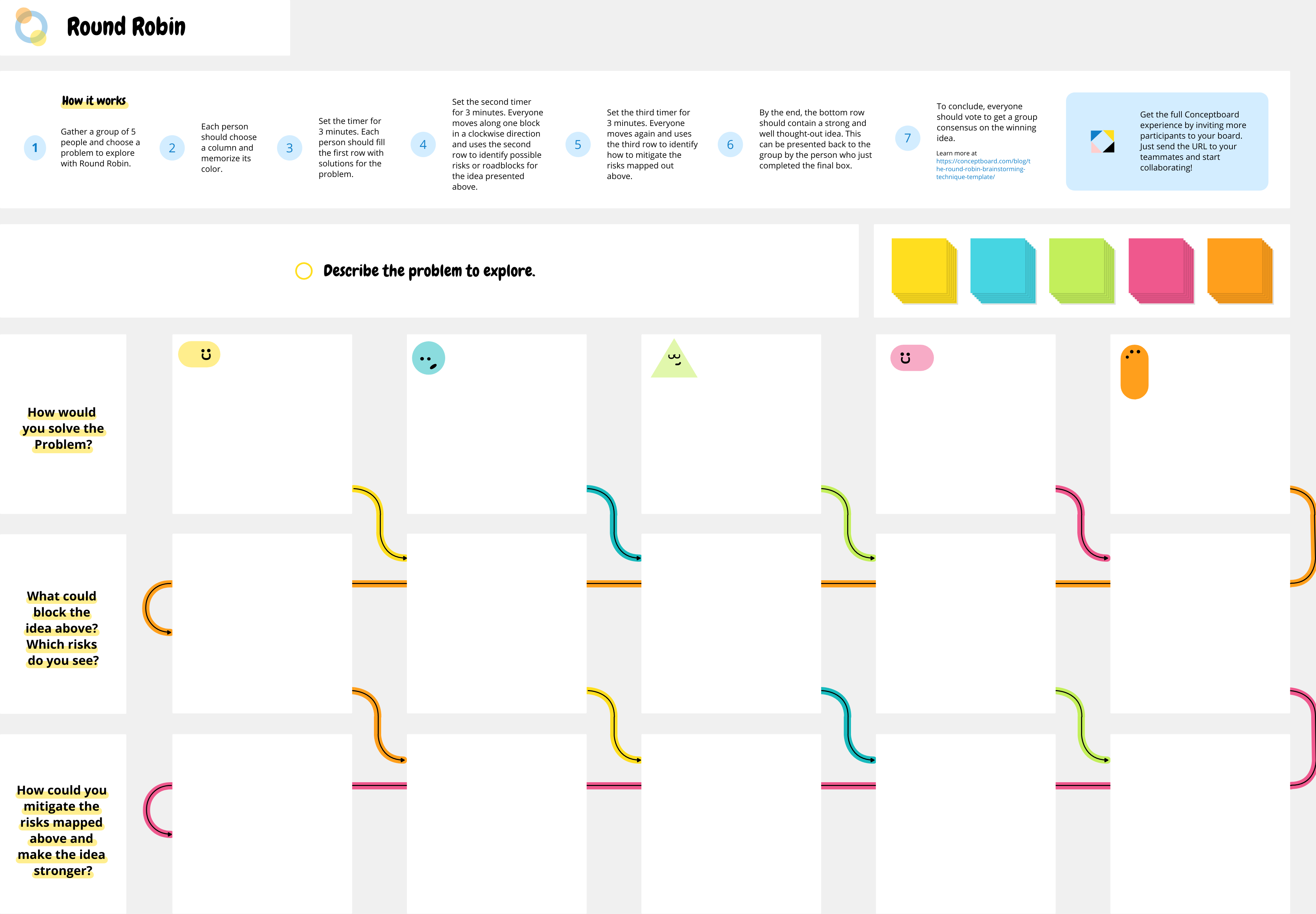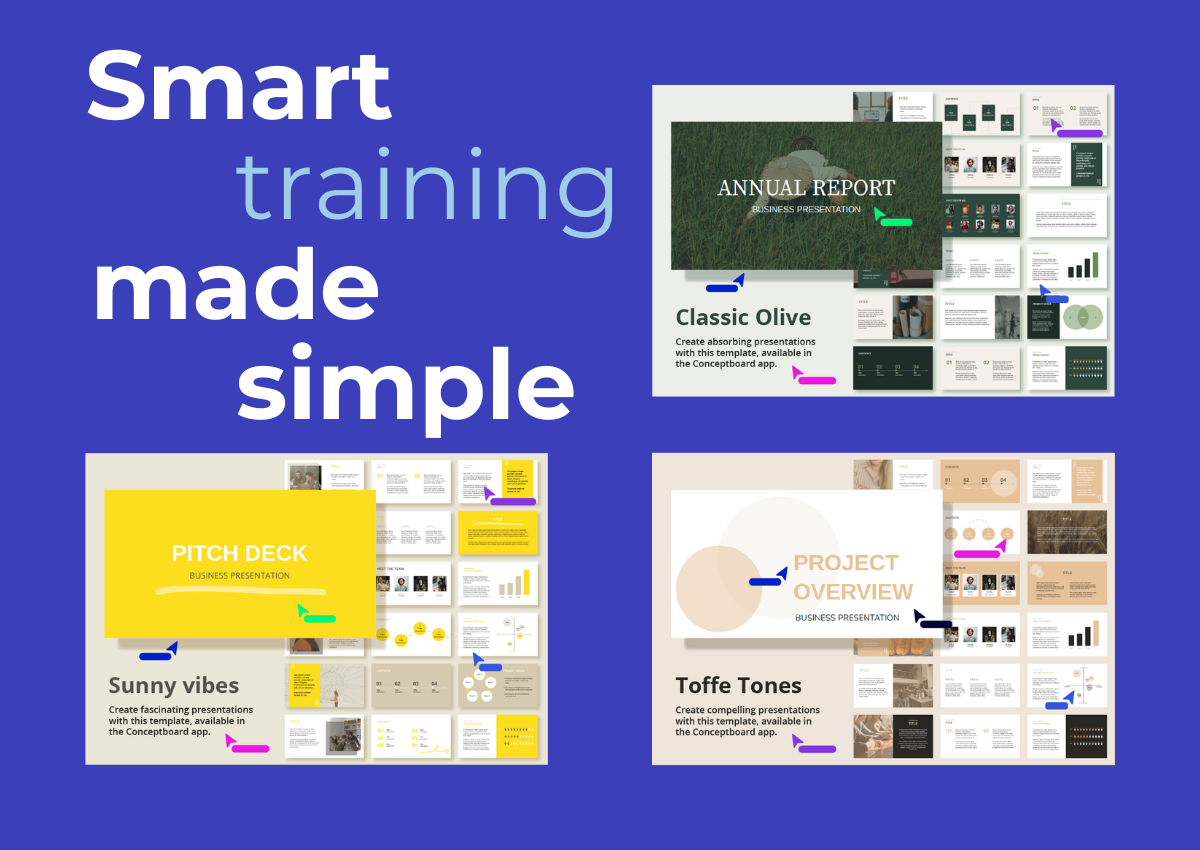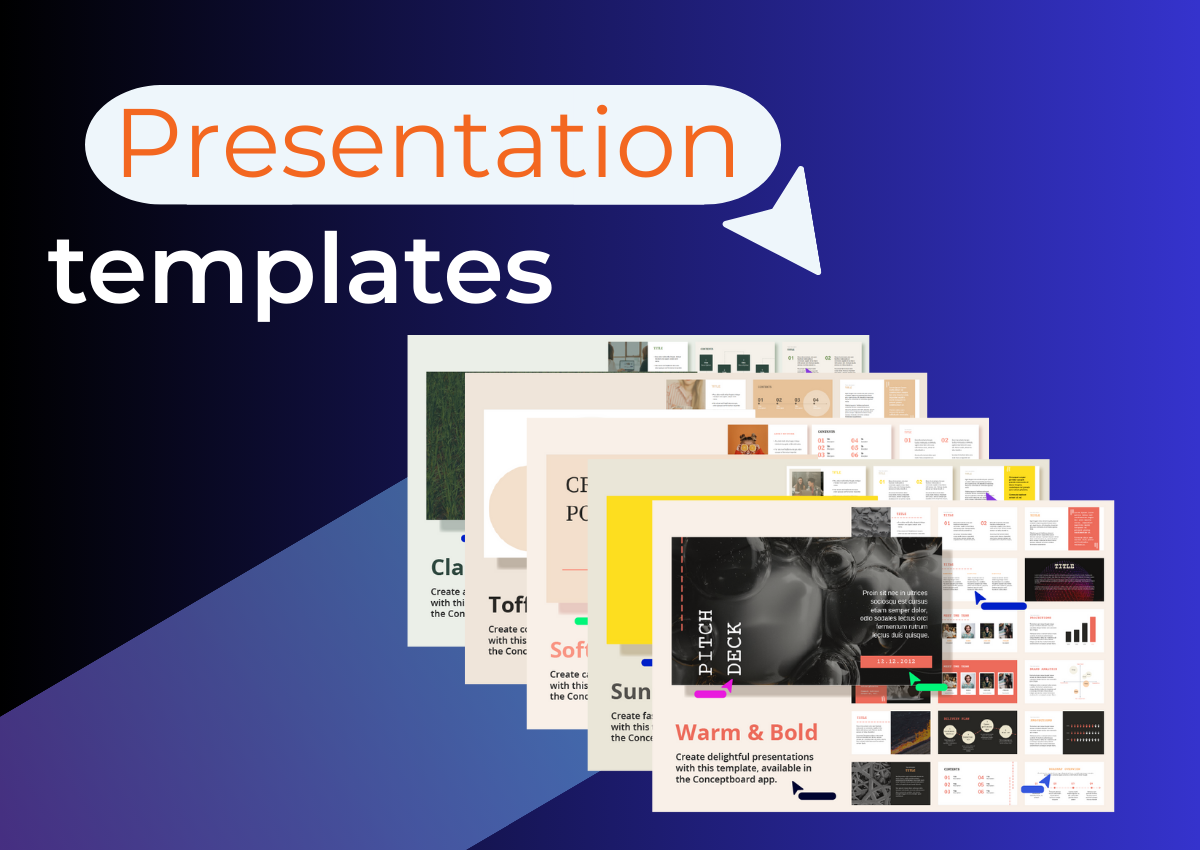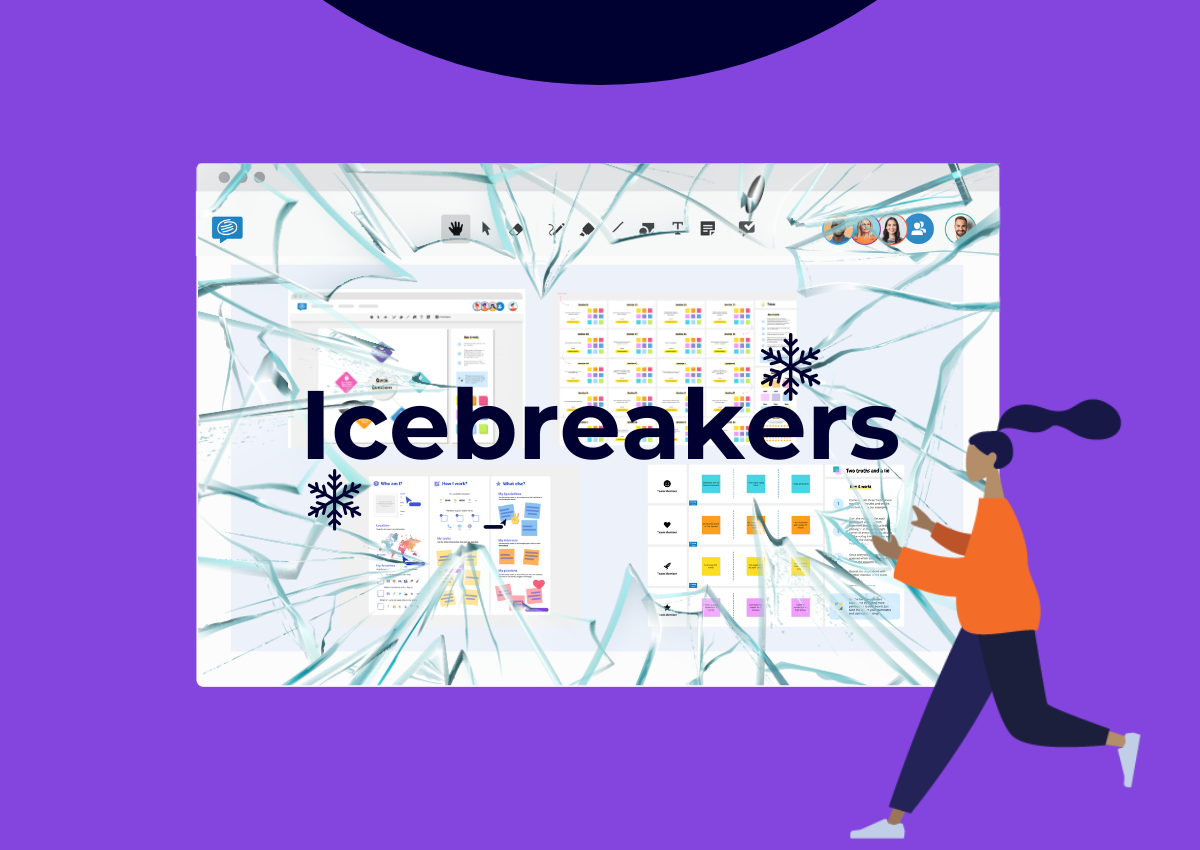This post is also available in: German
Round Robin brainstorming is a collective approach to brainstorming. It’s a two-step process, first using the How Might We concept of divergent problem-solving, before converging to refine the idea. It employs an iterative circular process to build on previous contributions from each participant. In that way, it’s a more balanced approach to ideation, making it similar to Brainwriting.
The method has gained popularity in recent years as people look to improve the way teams come together to solve problems. On top of that, as the workforce shifts to remote work, this technique is easy to replicate visually on an online whiteboard. If you’d like to explore alternative brainstorming techniques, we’ve rounded up 15 brainstorming techniques and templates you can use collaboratively with your team.
So let’s take a look at how to run a Round Robin brainstorming session on Conceptboard.
Advantages of Round Robin brainstorming
Like most brainstorming sessions, the major benefit of Round Robin brainstorming is harnessing multiple ideas to solve problems. However, where it differs is that its collaborative structure allows all voices to be heard. We’ve all been in regular brainstorming sessions that have gone nowhere as one person dominates the discussion. With Round Robin, not only do all participants visualise their ideas using text and sketches (instead of verbally), it also gives everyone’s ideas equal weight.
The second major benefit of Round Robin brainstorming is that within the session you already identify and solve potential roadblocks, before the idea has even left the paper. This is a great way to consider the true value of the idea before investing too much work.
With collaborative whiteboard tools such as Conceptboard, you don’t need to worry about all being in the same room. So whether your team is remote or co-located, make the switch to online whiteboards and collaborate anywhere with ease. Plus, the limitless board space means you never run out of space for your ideas.
How to do Round Robin brainstorming
We’ve created a simple template you can use for your Round Robin brainstorming. There’s space for up to five participants, but you can easily adapt it to large groups by selecting a block and Copy+Pasting. However, for very large groups, we recommend you split into smaller groups of six to keep the activity moving quickly.
Steps:
- Invite all participants to join Conceptboard, with a Round Robin template loaded.
- Start by first defining the problem statement you are trying to solve. You can use the How Might We template to help you with this first step.
- Then, give each participant time to sketch out a possible solution to the problem. The sketches don’t have to be highly artistic, but it can help to add a few notes in the box to further explain your idea.
- After 8 minutes, everyone moves along one block in a clockwise direction. They then set about identifying possible risks or roadblocks with the idea presented above. Sketch these out in the box.
- Once more, everyone moves along one spot. Now, the final step is to identify how you could mitigate the risks mapped out above. And then, further expand on the idea to make it even stronger.
- By the end, the bottom row should contain a very strong and well-thought-out idea. This can be presented back to the group by the person who just completed the final box.
- To conclude, everyone should vote to get a group consensus on the winning idea.
As you can see, Round Robin is a great way to get everyone involved in the problem-solving process. Not only that, initial ideas can be further expanded and risks identified before moving too far along the development process.
If you want to see some more techniques to improve your brainstorming sessions, check out our recent article on 5 top brainstorming techniques for teams.

